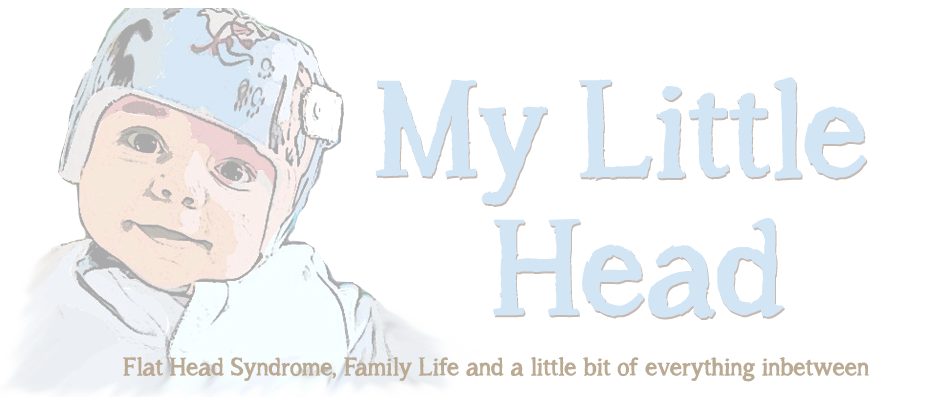Flat heads can fall into one of three types where the 'Normal' head shape would be called Normocephalic, the other three are called Plagiocephaly characterised by asymmetric distortion, Brachycephaly characterised by a flattening across the back of the head and Scaphocephaly characterised by a long, narrow head.




Diagram1) The 3 different types of Flat heads compared to the normal (Source: Technology in Motion)
There is also a condition called Torticollis, where the head persistently tilts to one side, and the head is usually turned to the opposite side. It is also called “wry neck”. Babies suffering with torticollis are at higher risk of developing plagiocephaly and facial asymmetry.
Symptoms:
The following could be signs of head flattening:- head turned one way most of the time
- head tilted to one side most of the time
- flat spot on back or one side of the head
- bulging on one side of the head
- one ear more forward than the other
- asymmetry of the face
Risk Factors
Some infants are more likely to develop head flattening and/or Torticollis. Clinical literature has identified some characteristics of infants who more commonly are developing head flattening:- male infants
- first born in birth rank
- a head shape, at birth, that is naturally wider than deeper
- multiple birth (twin, triplet, etc)
- a diagnosis of hip dysplasia
- altered tone (decreased or increased tone)
- a diagnosis of reflux
Prognosis:
In the UK Flat head syndrome is deemed as only a cosmetic issue. However there has been research in other countries that support the view it is more than just cosmetic. This includes:- A high risk for learning delays and developmental delay
- Increased need for special services when the child reaches school age
- Othodontic and TMJ issues
- Scoliosis
- Visual disturbances including visual field defects, and astigmatism
- auditory problems
- Psychological/social issues
Treatment:
In some cases the condition can sometimes improve as the child grows, but most will need some kind of treatment to reach an improvement, Firstly the child should be checked to ensure they are not suffering from craniosynostosis.Always, the first treatment for babies showing symptoms of flat heads that do not have craniosynostosis should be 'Repositioning Techniques'. A baby should always be placed to sleep on its back but in addition to this parents should try and rotate the babies head while it is sleeping to relive pressure on the same spot. Babies should also have plenty of tummy time which not only relieves pressure from the head, it also help build up the babies head and neck muscles as well as helping build muscles that the baby will use later on for sitting. Parents should also try and avoid prolonged time in car seats and baby bouncers. Also it is recommended to carry your baby with you in a carrier or sling, these keep the baby close to you but also leaves you hands free.
Another treatment in addition to the above is to see a qualified Cranial Osteopath. Unfortunately here in the UK this is not funded for under the NHS, I guess prices vary but the lady I used charged about £32 per session. During these sessions the osteopath with gently assert pressures on different parts of your babies skull to softly manipulate the skull back into a more normal position.
A babies head is very pliable for the first 4 months of life (hence the cases of positional plagiocephaly), however if after 4 months there is little improvement or improvement slows down then it is time to discuss Helmet treatment with one of the many qualified clinics across the UK. After 4 months the babies head becomes less manipulative and thus repositioning and osteopathy are likely to have less of an effect than before. Unfortunately again as the problem is deemed only cosmetic here in the UK, it is not funded by the NHS and thus must be paid for privately. Treatments cost around the £2000 mark, but initial assessments are usually free and I would recommend at least this visit for worried parents. The ideal time to start helmet treatment for the best results is between 4 and 7 months, a helmet can be fitted up to 18months, beyond this helmet treatment is likely to be ineffective.

No comments:
Post a Comment